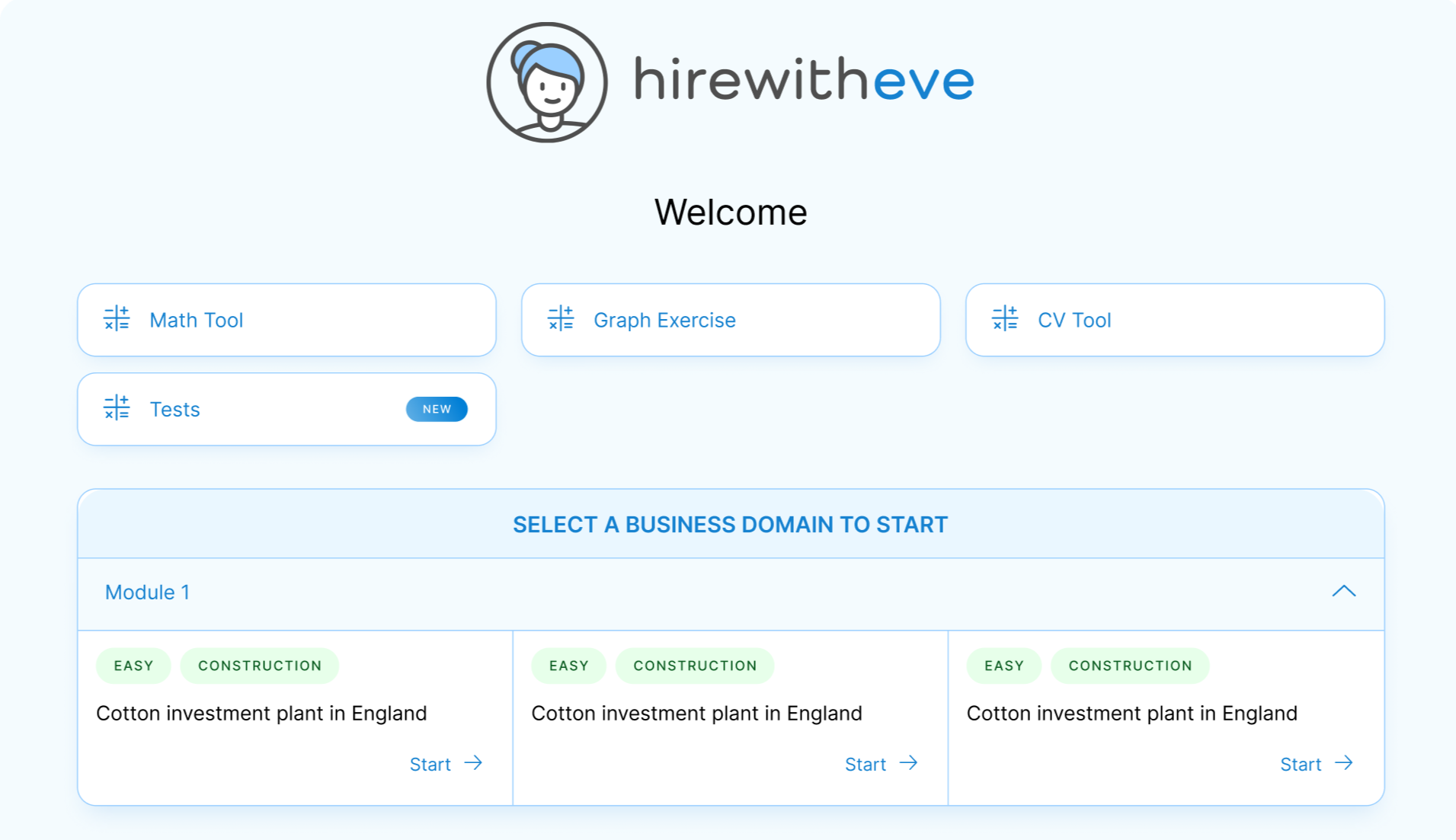Preventing Quiet Quitting with HirewithEve

Share
In the ever-evolving landscape of the labor market, one subtle yet significant challenge facing HR managers and talent acquisition specialists is the phenomenon known as "quiet quitting." Unlike the overt act of resignation, quiet quitting refers to employees doing the bare minimum required by their job, disengaging from their roles without actually leaving their positions.
Table of contents
Introduction
What is Quiet Quitting?
Is the Quiet Quitting Trend Real?
Examples of Quiet Quitting: 3 Real-Life Case Studies
How to Prevent Quiet Quitting: 6 Effective Strategies
Use HirewithEve to Build a Workforce Without Quiet Quitting
Quiet Quitting FAQ's
Conclusion
Introduction
Relevance to HR Managers and Talent Acquisition Specialists
For HR professionals, understanding and addressing quiet quitting is crucial. It directly impacts productivity, employee morale, and overall organizational health. This blog delves into the nuances of quiet quitting, offering actionable insights and strategies to prevent it within your workforce.
Introduction to HirewithEve: Your Solution to Quiet Quitting
HirewithEve is a cutting-edge talent assessment software designed to help organizations identify and engage motivated employees. By leveraging the power of skills testing, HirewithEve can be a pivotal tool in combating quiet quitting, ensuring that your workforce remains vibrant and engaged.
What is Quiet Quitting?
Definition and Origins
Quiet quitting sometimes referred to as "soft quitting," is when employees fulfill their basic job responsibilities but refrain from going above and beyond. This trend gained traction on TikTok in early 2022 and quickly spread across social media. The term encapsulates a growing sentiment among workers, particularly Gen Z and millennials, who feel overworked and undervalued.
The Role of Gen Z and Millennials
Research shows that Gen Z and millennials are more likely to engage in quiet quitting. A survey revealed that 82% of Gen Z workers find quiet quitting appealing. Factors such as high-stress levels and burnout contribute to this trend, with younger workers feeling the brunt of workplace pressures more acutely than their older counterparts.
The Impact of the Pandemic and the Great Resignation
The pandemic and the Great Resignation have reshaped the labor market, highlighting issues like burnout and lack of career progression. Quiet quitting has emerged as a response to these challenges, with workers seeking a better work-life balance and meaningful engagement from their employers.
Is the Quiet Quitting Trend Real?
Statistics and Evidence
Numerous studies confirm the reality of the quiet quitting trend. Gallup found that at least 50% of the American workforce identifies as quiet quitters. Additionally, one in six workers is completely disengaged, while only one in three is actively engaged in their work.
Comparison with Historical Employee Dissatisfaction
Some argue that quiet quitting is merely a rebranding of longstanding issues like worker dissatisfaction. However, whether it's a new phenomenon or a new label for an old problem, the underlying issues it highlights are critical for HR professionals to address.
Why the Trend Matters
Quiet quitting underscores significant workplace issues, such as burnout, lack of recognition, and poor management. Addressing these issues can lead to a more engaged, productive workforce, reducing turnover and enhancing overall organizational health.
Examples of Quiet Quitting: 3 Real-Life Case Studies
Case Study 1: A Burned-Out Journalist
A Vice journalist experiencing burnout decided to test quiet quitting by only doing work required by deadlines or specifically requested by colleagues. This approach halved his usual weekly work time from 40 hours to 20, highlighting the impact of burnout on productivity.
Case Study 2: Overworked Nurses
A study of nurses found that 77.3% had quietly quit, with 80.2% working in understaffed departments. These nurses stopped suggesting new ideas, staying overtime, or arriving early, illustrating how overwork and poor staffing can lead to disengagement.
Case Study 3: An Underappreciated Teacher
A teacher, frustrated by inadequate pay raises and favoritism from management, chose to do the minimum required work instead of seeking a new job. This included stopping activities like publishing papers and attending conferences, demonstrating how lack of recognition can drive quiet quitting.
Core Reasons for Quiet Quitting
These case studies reveal common themes: overwork and burnout, lack of career progression, and feeling undervalued by management. Addressing these root causes is essential for preventing quiet quitting.
How to Prevent Quiet Quitting: 6 Effective Strategies
Turn to Questionnaires and Feedback
Understanding your workforce is the first step in combating quiet quitting. Use questionnaires and pulse surveys to gather insights and feedback. Questions might include:
How do you feel about work today?
Do you feel excited about working here?
Do you feel like your work is recognized?
Does our company culture foster a supportive environment?
What do we need to change to improve your work environment?
Listening to and acting on this feedback can boost employee morale, motivation, and loyalty.
Reduce Overwork, Stress, and Burnout
The World Health Organization recognizes burnout as an occupational phenomenon. To reduce burnout:
Build a positive company culture that discourages toxic behavior and promotes timely recognition.
Encourage mental health breaks and time off.
Implement flexible or remote working arrangements.
Monitor employee workloads to prevent overloading and promote a healthy work-life balance.
Refine Roles and Responsibilities
Clear job descriptions and responsibilities help employees understand their contributions to organizational goals. This clarity prevents employees from taking on unnecessary tasks and reduces stress. Refined roles also improve hiring processes, allowing for more targeted talent assessments.
Build Positive, Inclusive Environments
A toxic workplace fosters quiet quitting. Combat this by:
Promoting positive communication and an open-door policy.
Building a culture of recognition.
Offering accommodations for diverse employee needs.
Reducing bias with skills-based hiring.
Use skills tests like HirewithEve's Culture Add test to hire candidates who align with your company culture and values.
Create Engagement Initiatives for Managers
Engaged managers are crucial for a healthy work environment. Ensure managers:
Have strong compensation and benefits.
Model healthy work boundaries.
Incorporate team skill development and well-being into recognition and rewards programs.
Participate in mentorship programs and receive leadership training.
Hire from the Inside and Provide Internal Mobility
Internal mobility motivates employees by showing them they are valued. Facilitate this with an internal talent marketplace where employees can apply for new roles. Support career development through regular one-on-one meetings, professional development plans, and skills tests to identify growth areas.
Use HirewithEve to Build a Workforce Without Quiet Quitting
The Role of Skills Tests in Preventing Quiet Quitting
Skills tests are essential for identifying motivated and capable employees. HirewithEve offers a range of tests to ensure you hire and develop the right talent, reducing the likelihood of quiet quitting.
How HirewithEve Can Help
HirewithEve provides comprehensive skills assessments that help you understand your employees' strengths and areas for development. This data-driven approach allows you to create targeted development plans, fostering engagement and reducing quiet quitting.
Features and Benefits of HirewithEve
Customizable Tests: Tailor assessments to match specific job roles and responsibilities.
Detailed Analytics: Gain insights into employee skills and potential areas for growth.
User-Friendly Interface: Easy for both HR professionals and employees to use.
Integration Capabilities: Seamlessly integrate with your existing HR systems.
Case Studies of Success with HirewithEve
Companies that have implemented HirewithEve have seen significant improvements in employee engagement and productivity. For example, ExoGroup streamlined its candidate screening process and boosted engagement throughout recruitment, reducing time-to-hire and enhancing overall team satisfaction.
Quiet Quitting FAQ's
Causes of Quiet Quitting
The primary causes of quiet quitting are stress, burnout, and lack of appreciation due to poor management. These factors lead employees to disengage from their work and only perform the minimum required tasks.
Identifying Quiet Quitters
Signs of quiet quitting include:
Not speaking up in non-mandatory meetings.
Avoid participation in team-building exercises and events.
Ceasing to suggest new ideas or initiatives.
Stopping extra work, such as attending conferences or publishing papers.
Consistently starting work late or leaving early.
The Impact of Quiet Quitting on Employees
Quiet quitting can harm employees by making them appear uninterested or incompetent, potentially leading to missed opportunities, poor references, and even job loss.
Conclusion
Addressing quiet quitting is essential for maintaining a motivated and productive workforce. By understanding its causes and implementing strategies to prevent it, HR managers and talent acquisition specialists can foster a more engaged and loyal workforce. HirewithEve provides the tools needed to achieve this, ensuring that you hire and develop the right talent for your organization. Start your journey with HirewithEve today and build a workforce that thrives.
The best advice in pre- employment testing, in your inbox.
No spam. Unsubscribe at any time.
TARGET YOUR TALENT
Unlock tailored solutions for your recruitment and hiring needs with Eve Platform's extensive case study library.
Free Resources

Transforming Hiring with 7 Key Recruiting Metrics
Enhancing recruitment processes with data-driven insights for better hiring outcomes.

Reducing Hiring Bias with Practicewitheve.
Utilizing Practicewitheve to combat bias and streamline recruitment processes effectively.

Finding Detail-Oriented Candidates with Practice
Practicewitheve enhances hiring by accurately assessing candidates' attention to detail.








